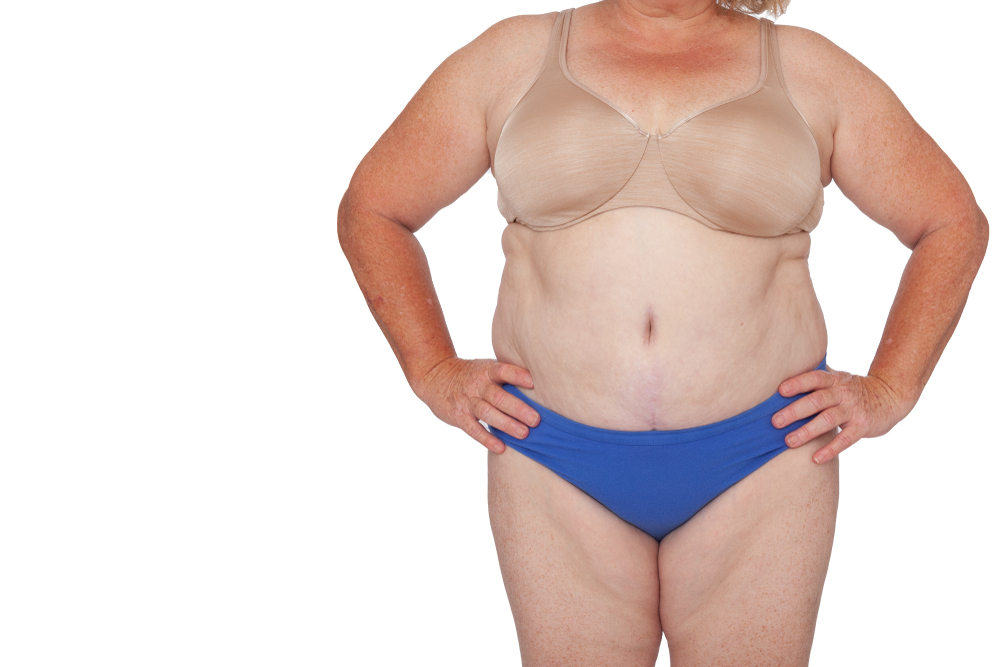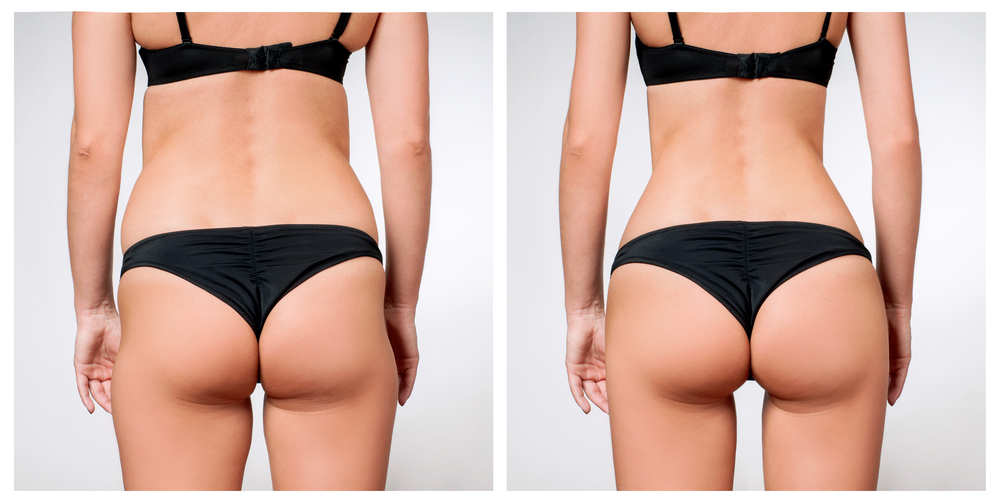Breast augmentation is a cosmetic surgery that enlarges the breasts. It’s sometimes referred to as a “breast enlargement” or a “boob job.” Most often, a plastic surgeon performs a breast augmentation by using implants, but your breasts can also be enlarged with fat from a different part of your own body. Whether you’re considering breast augmentation with implants or breast augmentation with fat transfer, it’s important to be aware of breast augmentation complications. It’s a surgical procedure, so there are risks involved.
The Risks of Breast Augmentation
Certain risks are shared by the different types of breast augmentation. This is because it’s a surgical procedure and requires one or more incisions, anesthesia, and sedation. General breast augmentation complications may include:
- Temporary pain
- Swelling and bruising
- A feeling of tightness in the chest
- Anesthesia risks (such as allergic reaction)
- Infection
- Bleeding
- Hematoma
- Poor scarring
- Changes in breast or nipple sensation
- Persistent pain
- The possibility of needing revision surgery
Breast Augmentation Complications with Breast Implants
Breast augmentation with breast implants carries its own risks. The possible complications from breast implants include:
- Capsular contracture – When the implant becomes abnormally tight or thick, resulting in asymmetry, pain, and an undesirable appearance
- Implant rupture
- Wrong or faulty position of the implant
- Wrinkling of the skin over the implant
- The formation of tight scar tissue around the implant
- Noticeable creases or folds in the breast implant
- The implant rotating in the breast
- Being unable to breastfeed or producing less milk than before the breast reconstruction
- The body rejecting the implant
Risks Associated with Breast Implants
There are different types of breast implants:
- Silicone gel-filled implants
- Saline-filled implants (using sterile saltwater)
- Gummy bear implants (using a thick gel)
Each has its own potential complications.
Gel-Filled Silicone Implants
Ruptures are not as easy to detect as they are in saline-filled implants. These harder-to-detect ruptures are known as silent ruptures. If an implant ruptures, the silicone stays in the body, though it can sometimes spread outside the breast. Silicone in the body doesn’t result in any higher risk of disease, but if you have a rupture, your plastic surgeon will recommend removing the implant and the loose silicone gel. This is because a ruptured silicone breast implant can cause breast pain or changes in the shape of the breast. Silent ruptures can only be detected using an MRI scan. The FDA recommends that women with silicone gel breast implants get a scan three years after the plastic surgery.
There is less risk of a silicone implant causing a rippling of the skin than there is with saline implants.
The implant is filled before it is inserted, which means a cosmetic surgeon needs to make a larger incision than he or she would when placing saline breast implants. Larger scars could mean increased chance of scarring.
Saline-Filled Implants
Ruptures are easier to notice than they are in silicone implants. If a rupture occurs, the breast quickly changes shape as the saltwater leaks out. That saline solution is absorbed into the body, causing no harm.
A cosmetic surgeon makes a smaller incision to place saline breast implants than he or she would make for silicone gel implants. This means there is less risk of major scarring.
Gummy Bear Implants
There is a lower chance of rupturing and leakage when compared to both saline and silicone implants. This is due to the strength of gummy bear implants.
If a gummy bear implant does leak, the leak can be harder to detect than a leak in saline-filled implants. This is an example of a silent rupture.
Gummy bear implants are typically textured to help the breast tissue grow into the texture, like Velcro®. This greatly lowers the risk of the implants rotating and shifting inside the chest.
There is a risk of capsular contracture with gummy bear implants, but it’s less than the risk of capsular contracture with both saline and silicone implants.
Breast Implant-Associated Anaplastic Large Cell Lymphoma
This rare complication, known as BIA-ALCL for short, is a type of lymphoma (cancer) that can develop around breast implants. BIA-ALCL is a cancer of the immune system, not a form of breast cancer. When it occurs, it tends to do so in patients who have breast implants with textured surfaces.
The condition is highly treatable and curable, with early detection providing patients the best chances for a quick recovery. If you notice symptoms of BIA-CLCL, such as pain, a skin rash, breast enlargement, asymmetry, or hardening of the breast, it’s important to visit a doctor who can assess the symptoms and recommend the best course of treatment.
Breast Implant-Associated Illness
This condition, abbreviated as BIAI or BII (breast implant illness), is self-reported. BIAI is not an official medical diagnosis, but women who believe they have it report a number of common symptoms, including:
- Fatigue
- Chest pain
- Hair loss
- Headaches
- Chills
- Photosensitivity
- Chronic pain
- Rash
- Anxiety
- Brain fog
- Sleep disturbance
More research is needed to find out why these symptoms occur and how breast implant removal can help. But for many patients who experience these symptoms, removing the breast implant does help to alleviate the symptoms.
Breast Implant Removal
If any sort of complication occurs with your breast implant, removing the implant is always an option. For instance, if an implant moves or ruptures, a plastic surgeon can remove it and insert a new one as part of revision surgery.
If you notice an issue with your implant, get in touch with your surgeon right away. He or she will schedule a consultation, where they will be able to pinpoint what’s happened and tell you whether breast implant removal is necessary.

Breast Augmentation Risks: Fat Transfer
Breast augmentation via fat transfer involves taking fat from other parts of your body—like your thighs, belly, or buttocks—and transferring it to your breasts. A plastic surgeon will remove the fat using liposuction, a type of cosmetic surgery that breaks up and then sucks up fat from the body. This breast augmentation procedure is ideal if you want a relatively small increase in breast size, with more natural-looking results. While this type of breast procedure has advantages over implants, it has its own risks. They include:
- Cysts
- Necrosis (death of fat cells)
- The possibility that some of the transferred fat cells will leave the breast area – Your body may absorb up to 50% of the fat injected into the breast. This means your plastic surgeon cannot fully predict the final results of your breast reconstruction.
- The need for touch-up injections to retain your desired breast shape
- Fat injection interfering with mammograms, which are used to detect breast cancer – This breast augmentation technique can lead to calcifications or small deposits of calcium in the breast. The pattern of these calcifications is different than those associated with breast cancer, but they may result in the need for more frequent breast biopsies (which have their own risks). This is especially true if a woman has a family history of breast cancer.
Self-Care During Recovery Can Help Reduce These Risks
When recovering from your breast augmentation surgery, it’s vital that you take care of yourself. Your cosmetic surgeon will advise you to do certain things to help your new look get off to the best start. These may include:
- Sleeping on your back, rather than on your front or side, for the first few weeks after surgery – This will prevent from you putting pressure on implants, which could cause them to change shape.
- Wearing a surgical support bra – This helps keep implants and transferred fat in the correct position.
- Taking a break from work for a week, avoiding moderate physical exercise for three weeks, and not engaging in strenuous physical activity for six weeks. – This ensures you heal as quickly as possible. Straining yourself too soon after your surgery could result in an implant rupturing, changing position, or becoming deformed and isn’t advantageous for breasts after fat transfer either.
Discuss Breast Augmentation Complications with a Plastic Surgeon
Any surgery comes with possible complications. Many breast augmentation complications risks vary depending on your body type, medical history, allergies, use of medication, and other individual factors. It’s important to book a consultation with a cosmetic surgeon, so you can discuss these factors with someone who has the knowledge and experience to help you understand them. You can both arrive at a breast augmentation procedure that’s safest for you and that offers the best results.







